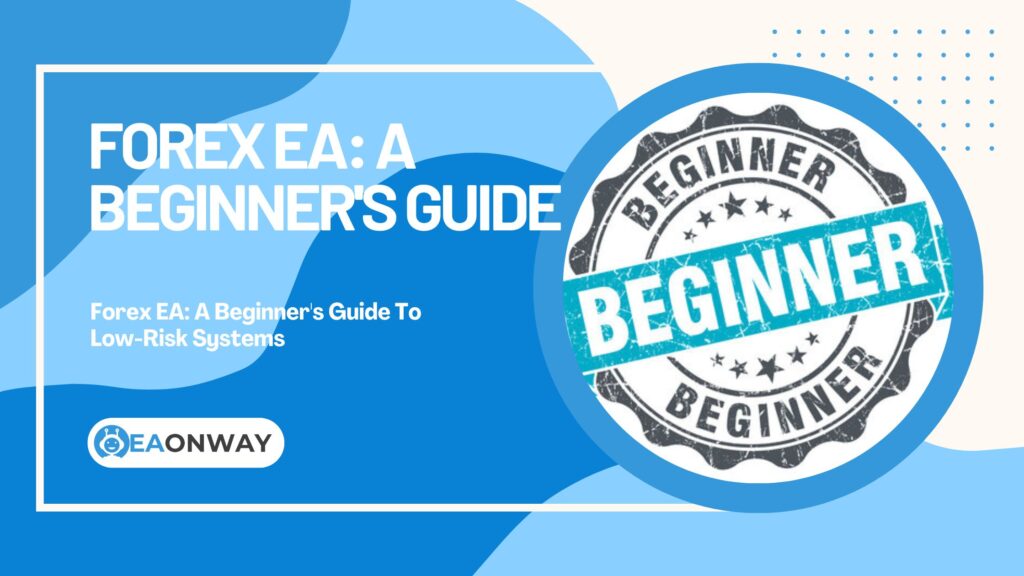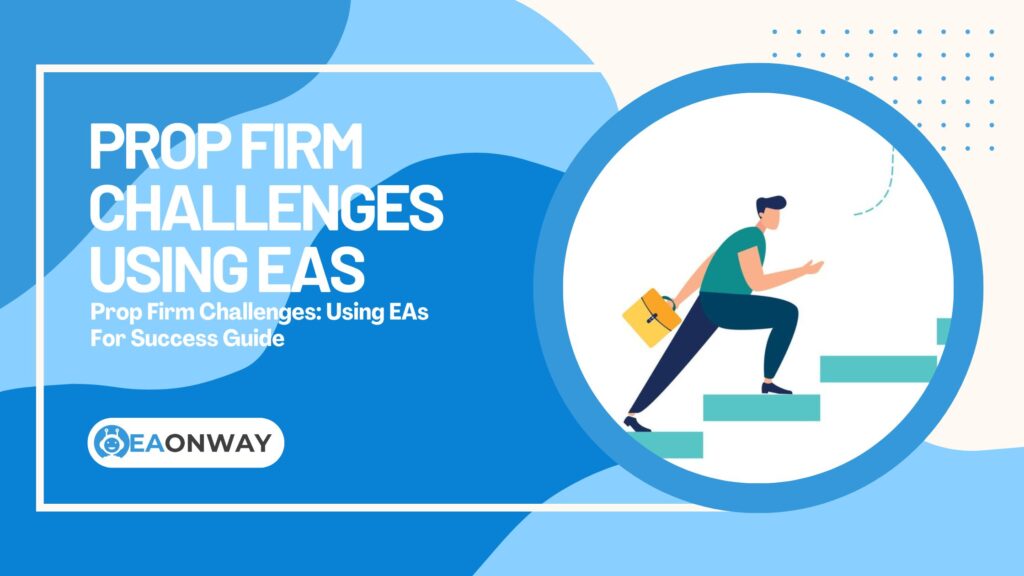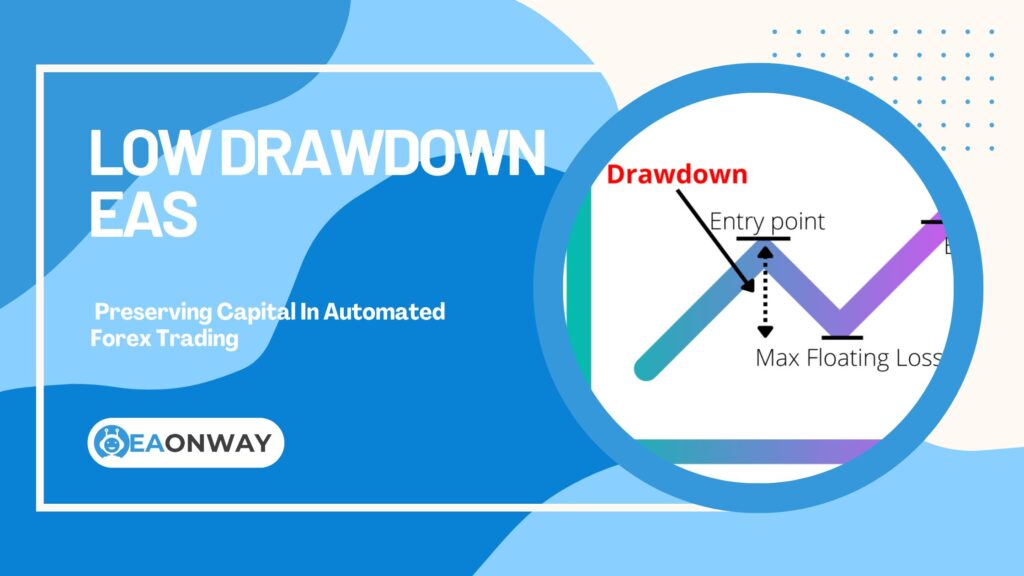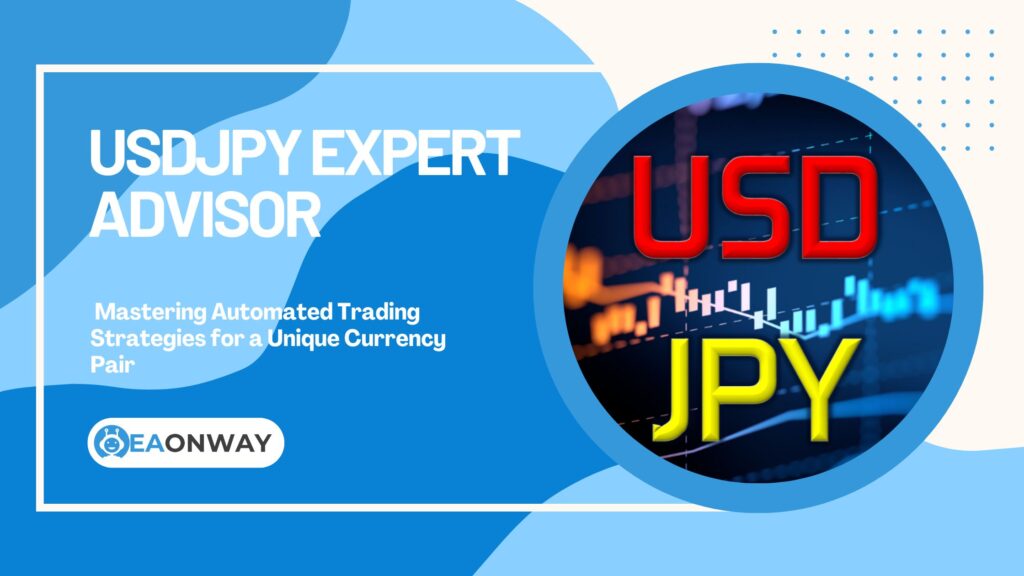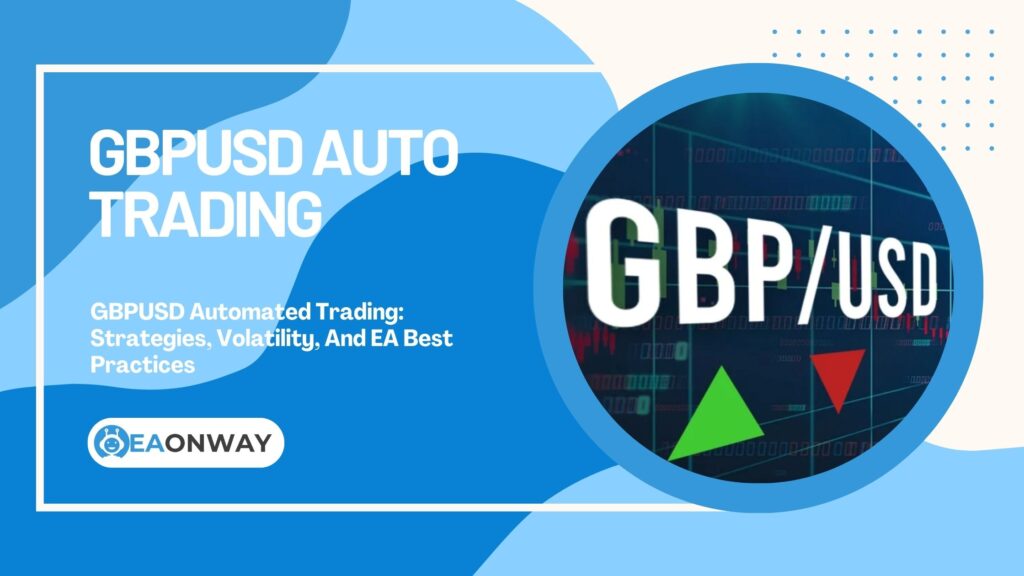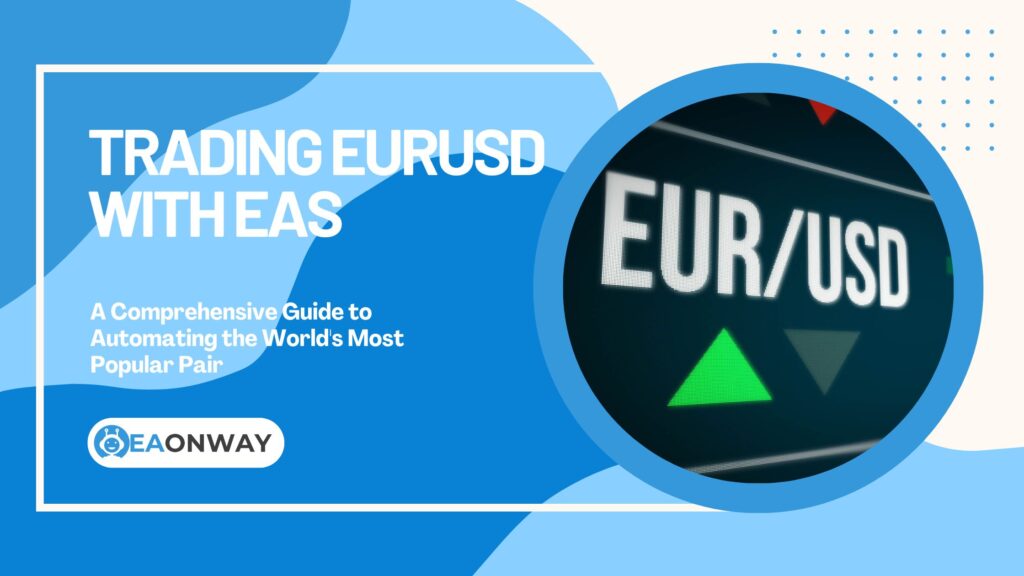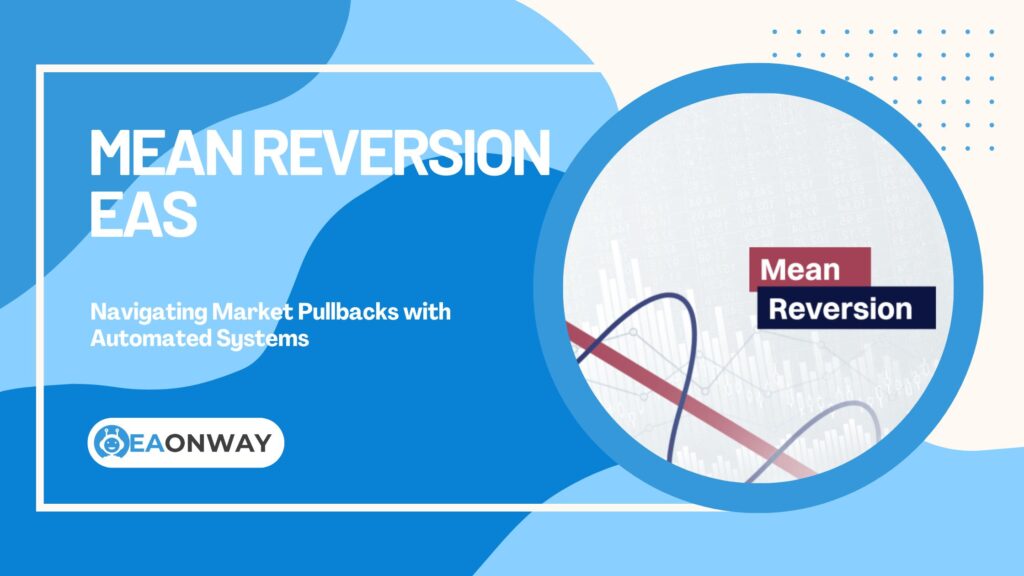Common EA Trading Strategies
Forex EA Secrets: Maximizing Major Pair Performance
Forex EA Secrets: Maximizing Major Pair Performance
Are you exploring Forex Expert Advisors (EAs) to navigate the currency markets, hoping to automate your trading on major pairs like the EUR/USD or GBP/USD? The allure of automated trading systems, often called Forex robots, is strong, promising tireless execution and emotion-free decision-making. Many traders, especially those with demanding careers in IT, engineering, or finance, look to EAs as a way to participate in the Forex market without being glued to their screens. However, the path to successfully utilizing a Forex EA is paved with complexities, potential pitfalls, and a significant learning curve.
This comprehensive guide, brought to you by EaOnWay.com, delves into the world of Forex EAs, focusing on how to strategically select and optimize their performance on major currency pairs. We aim to equip you with in-depth knowledge to understand their mechanics, identify suitable pairs, effectively backtest and optimize your MT4 Expert Advisor or other algorithmic trading systems, and crucially, manage the inherent risks. Our goal is to help you avoid common pitfalls, cut through the hype, and develop realistic expectations, understanding that no Forex EA can guarantee profits. We focus purely on education, providing insights into Forex EA optimization and strategy development.
Quick Wins: Key Insights for EA Success
Before diving deep, here are some crucial takeaways for anyone considering or currently using a Forex Expert Advisor, especially on high-volume currency pairs:
- Understand EAs Thoroughly: Know that a Forex EA is a program, not a magic box. Its success depends on its underlying logic, market conditions, and your ability to manage it.
- Major Pairs Aren’t Universally “Best”: While major Forex pairs offer benefits like liquidity, their suitability depends on your EA’s specific strategy.
- Optimization is Key, But Not a Guarantee: Forex EA optimization fine-tunes parameters, but over-optimization can lead to poor live results. Continuous learning and adaptation are vital.
- Rigorous Backtesting is Non-Negotiable: Backtesting Forex EAs on historical data is essential, but understand its limitations. Past performance is not indicative of future results.
- Risk Management is Paramount: Never trade with an EA without strict risk management rules. Define your maximum drawdown and stick to your plan.
- Realistic Expectations Protect Capital: The Forex market is inherently risky. No EA offers guaranteed profits. Focus on education and cautious application. Be wary of any “best Forex EA” claims that promise unrealistic returns.
Decoding Forex EAs and Major Currency Pairs
To effectively maximize an EA’s performance, a foundational understanding of what EAs are and the characteristics of the instruments they trade—particularly major Forex pairs—is essential. This knowledge forms the bedrock of informed decision-making in automated Forex trading.
What is a Forex Expert Advisor (EA)?
A Forex Expert Advisor (EA) is a piece of software, a type of Forex robot, that automates trading decisions on platforms like MetaTrader 4 (MT4) or MetaTrader 5 (MT5). It executes trades automatically based on a pre-programmed trading strategy, which often involves technical indicators, price action patterns, or other mathematical models. EAs can monitor markets, identify trading opportunities, open, manage, and close positions without manual intervention, 24 hours a day, as long as the trading platform is running.
The primary purpose of an EA is to remove the emotional and psychological aspects of trading, enforce discipline by strictly adhering to the programmed rules, and allow for trading opportunities to be captured even when the trader is not physically present. However, it’s crucial to remember they are tools, and their effectiveness is dictated by their design and the market conditions they encounter.
How Do Expert Advisors (EAs) Work in Forex Trading?
Expert Advisors (EAs) operate by interpreting market data and executing trades based on a set of predefined rules coded into them. When an EA is attached to a currency pair chart on a trading platform like MetaTrader, it receives live price feeds. It then processes this information through its algorithm. If the market conditions meet the criteria specified in its code (e.g., a moving average crossover, a specific indicator value, a price pattern), the EA will automatically generate a trade signal and can execute the trade (buy or sell) with the broker, including setting stop-loss and take-profit orders. This entire process, from analysis to execution, happens automatically, making it a core component of automated Forex trading.
What Are Major Forex Pairs and Why Are They Popular?
Major Forex pairs are the most traded currency pairs in the global foreign exchange market. They always involve the US Dollar (USD) on one side of the pair, paired with currencies from other major economies. The most commonly recognized major pairs include:
- EUR/USD (Euro vs. US Dollar) – accounts for approximately 30% of global daily forex turnover
- GBP/USD (British Pound vs. US Dollar) – often called “Cable” – represents 9.5% of trading volume
- USD/JPY (US Dollar vs. Japanese Yen) – has a market share of 13.5%
- USD/CHF (US Dollar vs. Swiss Franc)
- AUD/USD (Australian Dollar vs. US Dollar) – often called “Aussie”
- NZD/USD (New Zealand Dollar vs. US Dollar) – often called “Kiwi”
- USD/CAD (US Dollar vs. Canadian Dollar) – often called “Loonie”
These pairs are popular primarily due to their high liquidity, meaning large volumes are traded daily. According to the Bank for International Settlements (BIS) Triennial Central Bank Survey, these pairs consistently account for a significant portion of daily Forex turnover (Source: BIS, Triennial Central Bank Survey of Foreign Exchange and Over-the-counter (OTC) Derivatives Markets). This high volume generally translates to tighter spreads (the difference between buy and sell prices) and more readily available trading opportunities, which can be advantageous for various trading strategies, including those employed by EAs.
Why Prioritize Major Forex Pairs for Your EA?
Focusing your Forex EA on major currency pairs can offer several potential advantages, especially for those new to automated trading or employing strategies sensitive to trading costs:
- High Liquidity: Major pairs generally have the highest trading volume. This ensures that you can typically enter and exit trades at your desired price levels with minimal slippage, especially for standard trade sizes.
- Lower Spreads: Due to high competition among brokers and abundant liquidity, spreads on major pairs are usually tighter compared to minor or exotic pairs. Lower spreads directly reduce transaction costs, which can significantly impact an EA’s profitability over time.
- More Predictable Price Movements (Relatively): While no market is truly predictable, major pairs often exhibit more discernible trends and patterns due to the wealth of economic data and news flow surrounding these large economies. This can sometimes make them more suitable for certain types of EA strategies based on technical analysis.
- Abundant Information: There is a vast amount of historical data, news, analysis, and educational resources available for major pairs, which is beneficial for strategy development, backtesting Forex EAs, and ongoing EA parameter optimization.
However, it’s important to note that “more predictable” doesn’t mean “easy.” All Forex trading involves substantial risk, and even major pairs can experience extreme volatility, especially during major economic news releases.
Choosing the Right Major Forex Pairs for Your EA
Selecting the appropriate major Forex pairs for your Expert Advisor is not a one-size-fits-all decision. It requires careful consideration of your EA’s specific trading strategy and the unique characteristics of each currency pair.
How Do You Select Suitable Major Forex Pairs for an EA?
To select suitable major Forex pairs for an EA, you should analyze the EA’s underlying trading logic (e.g., trend-following, range-bound, scalping), then match this logic with the historical behavior and characteristics of different major pairs. Consider factors like average volatility, typical spread, susceptibility to news events, and session activity. Extensive backtesting on various pairs is crucial to identify which ones yield the most consistent and robust performance for that particular EA strategy.
Assessing Volatility and Liquidity in Major Pairs
Volatility refers to the degree of price fluctuation a currency pair experiences over a given period. Some EAs thrive in volatile markets, while others perform better in calmer conditions.
- High Volatility Pairs (e.g., GBP/USD, GBP/JPY – though JPY crosses are minors): These can offer more significant profit opportunities but also come with increased risk. EAs designed for breakout strategies or those that can handle wider stop losses might be suitable.
- Lower Volatility Pairs (e.g., EUR/USD, USD/CHF under certain conditions): These might be preferred for EAs using scalping or tight range-bound strategies.
Liquidity, as mentioned, is generally high for all major pairs. However, even within majors, liquidity can fluctuate, especially around news releases or during specific trading sessions (e.g., Asian session for AUD/USD and USD/JPY). Your Forex VPS hosting solution’s latency can also be a factor here, as high liquidity can mean faster fills, but only if your connection is swift.
Understanding Currency Pair Correlations and Their Impact
Currency pairs do not move in isolation; they often exhibit correlations. For example, EUR/USD and GBP/USD tend to move in the same direction (positive correlation) because both involve the USD as the counter-currency and the Eurozone and UK economies can share similar influences. Conversely, EUR/USD and USD/CHF often have a negative correlation.
Understanding these relationships is vital if your EA trades multiple pairs simultaneously. Trading highly correlated pairs in the same direction can amplify risk, akin to putting all your eggs in one basket. Conversely, it can also inadvertently lead to hedging if traded in opposite directions.
Aligning Your EA’s Strategy with Pair Characteristics
The core logic of your Forex EA should dictate your pair selection:
- Trend-Following EAs: These EAs aim to identify and capitalize on sustained directional movements. Pairs known for strong trends, like GBP/USD or USD/JPY at times, might be suitable candidates. Backtesting will help confirm this.
- Range-Bound/Mean-Reversion EAs: These EAs profit from prices oscillating within a defined range. Pairs like EUR/CHF (a minor pair, but illustrative) or sometimes EUR/USD during quieter periods might be tested.
- Scalping EAs: These EAs make many small trades, aiming for tiny profits. They require very tight spreads and fast execution, making major pairs like EUR/USD prime candidates due to their low transaction costs.
- News Trading EAs: These are designed to trade around significant economic announcements. All major pairs are affected by news, but the impact varies. Understanding which news events affect which currencies is critical.
The process of Forex trading strategy development for an EA must include pair selection as a fundamental step.
The Art and Science of Forex EA Optimization
Once you have a Forex EA and a preliminary idea of which major pairs might suit its strategy, the next crucial step is optimization. This process aims to fine-tune the EA’s parameters for potentially better performance.
What is Forex EA Optimization?
Forex EA optimization is the process of systematically adjusting an Expert Advisor’s input parameters and testing them against historical data to find the settings that would have yielded the most favorable performance based on predefined criteria (e.g., highest profit, lowest drawdown). This is typically done using the strategy tester function in trading platforms like MetaTrader (MetaTrader Strategy Tester), allowing traders to discover potentially more effective configurations for their automated Forex trading systems.
Key Goals When Optimizing Your Forex EA
While maximizing profit is often a primary goal, a holistic approach to EA parameter optimization should consider:
- Profitability: Net profit, profit factor (gross profit / gross loss).
- Risk Control: Maximum drawdown (the largest peak-to-trough decline in account equity), risk-reward ratio.
- Consistency: Number of trades, win rate, stability of equity curve.
- Robustness: Ensuring the EA performs well across different market conditions and isn’t just “curve-fitted” to a specific historical period.
It’s about finding a balance. An EA with extremely high profit but also a terrifyingly high maximum drawdown Forex traders would find unacceptable might not be a good candidate for live trading.
What Are Common Optimization Parameters for Forex EAs?
The specific parameters available for optimization vary widely depending on the EA’s design. However, some common examples include:
- Indicator Settings: Periods for moving averages, RSI levels, MACD settings, etc.
- Stop Loss (SL) and Take Profit (TP) Levels: Values in pips or as a multiple of ATR (Average True Range).
- Trading Times: Restricting EA activity to specific hours or days.
- Lot Size / Risk per Trade: Though often managed separately as part of overall risk management rather than purely “optimized.”
- Trailing Stop Parameters: Activation and step values.
- Order Entry Filters: Minimum volatility, spread filters.
For instance, an EURUSD EA strategy might involve optimizing the periods of two moving averages for its crossover signals and the ideal stop-loss distance.
The Pitfall of Over-Optimization: Recognizing and Avoiding Curve Fitting
Over-optimization, or curve fitting, is a significant danger in EA development. It occurs when an EA’s parameters are so finely tuned to a specific set of historical data that it performs exceptionally well in backtests but fails miserably in live trading because it has essentially “memorized” past noise rather than learned a robust trading logic.
How to Recognize and Avoid Curve Fitting:
- Use Out-of-Sample Data: Optimize on one portion of historical data and test the chosen parameters on a different, unseen portion.
- Walk-Forward Optimization: A more advanced technique where the EA is optimized on a segment of data, then tested on the next segment, and this process is repeated.
- Keep Parameters Realistic: Avoid overly precise or obscure parameter values that seem to work “too perfectly” on historical data.
- Favor Simplicity: EAs with fewer, more robust parameters are often less prone to curve fitting.
- Focus on Logic, Not Just Numbers: Understand why certain parameters might work, rather than blindly chasing the best backtest numbers. As the U.S. Securities and Exchange Commission (SEC) often warns, past performance is not indicative of future results (Source: SEC Investor Alerts).
Rigorous Backtesting: Validating Your EA Strategy
Backtesting is an indispensable part of developing and deploying a Forex EA. It involves simulating how an EA would have performed on historical market data, providing insights into its potential viability.
What is the EA Backtesting Process for Forex?
The EA backtesting process for Forex is the simulation of an Expert Advisor’s trading strategy on historical price data to assess its hypothetical performance over a past period. This involves using a trading platform’s strategy tester (like the MetaTrader Strategy Tester) to run the EA with specific settings across selected currency pairs and timeframes. The output provides metrics such as profitability, drawdown, and trade frequency, helping traders evaluate the EA’s potential before risking real capital.
A Practical Guide to Backtesting Your EA in MetaTrader
Most traders use MetaTrader 4 (MT4) or MetaTrader 5 (MT5) for EA trading. The backtesting process generally involves these steps:
- Open the Strategy Tester: Usually found under the “View” menu in MetaTrader.
- Select the EA: Choose the Expert Advisor you want to test.
- Choose the Currency Pair: Select one of the major Forex pairs (e.g., EURUSD).
- Select the Timeframe: Choose the chart timeframe the EA is designed for (e.g., H1, M15).
- Set the Date Range: Select a significant historical period for testing. Ensure it covers various market conditions (trending, ranging, volatile).
- Modeling Quality: Use the highest quality historical data available (e.g., “Every tick”). Poor quality data can lead to misleading results. Many brokers offer 99.9% modeling quality data.
- Input EA Parameters: Set the initial parameters for the EA. If optimizing, the tester will iterate through different combinations.
- Set Spread: Use a realistic average spread for the pair or “Current.”
- Run the Test: Start the backtest.
- Analyze Results: Review the generated report and equity curve.
Critical Metrics for Interpreting EA Backtesting Results
When analyzing backtest reports, focus on these key metrics:
- Total Net Profit: The overall profit or loss.
- Profit Factor: Gross profit divided by gross loss. A value above 1 indicates profitability; ideally, traders look for 1.5 or higher, but this depends on strategy.
- Maximum Drawdown (MaxDD): The largest percentage drop from a peak in equity. This is a critical risk measure. A high MaxDD can wipe out an account.
- Total Trades: A sufficient number of trades is needed for statistical significance. Too few trades might mean the results are due to luck.
- Win Rate (% of Profitable Trades): The percentage of trades that were profitable.
- Average Win / Average Loss: The ratio of the average profit on winning trades to the average loss on losing trades.
- Sharpe Ratio (if available): Measures risk-adjusted return.
- Equity Curve: A visual representation of account balance over time. Look for a smooth, upward-sloping curve, not an erratic one.
Beyond Backtesting: The Value of Forward Testing and Demo Accounts
Backtesting, while essential, has limitations. It uses historical data, and future market conditions can differ significantly.
- Forward Testing (Paper Trading): After backtesting, run the EA on a demo account with live market feeds for a period (weeks or months). This tests the EA in current market conditions without risking real money.
- Small Live Account: If forward testing is promising, consider testing on a small live account with minimal capital you can afford to lose. This introduces real-world factors like actual slippage and execution quality.
This multi-stage testing approach helps build confidence in an EA before committing significant capital.
Critical Factors Influencing EA Performance on Major Pairs
Even a well-designed and optimized EA can see its performance impacted by various external and market-related factors. Understanding these is crucial for realistic expectations and effective management.
How Does Market Volatility Impact EA Performance on Major Currency Pairs?
Market volatility significantly impacts EA performance on major currency pairs by influencing trade frequency, profit potential, and risk. High volatility can create more trading opportunities for some EAs but may also trigger stop losses more frequently or lead to wider spreads and increased slippage. Conversely, low volatility might starve other EAs of signals or lead to prolonged periods of inactivity. The EA’s design must account for varying volatility environments.
For example, an EA designed for trending markets might struggle during choppy, range-bound periods with low volatility. Conversely, a scalping EA might find it difficult to achieve its small profit targets if volatility suddenly spikes, causing spreads to widen and slippage to increase.
The Hidden Costs: Spreads, Slippage, and Commissions
These transaction costs can erode an EA’s profits, especially for strategies that trade frequently (like scalping EAs).
- Spreads: The difference between the bid and ask price. Major pairs usually have tight spreads, but they can widen during volatile news events or periods of low liquidity (e.g., around market open/close or holidays).
- Slippage: The difference between the expected price of a trade and the price at which the trade is actually executed. Slippage and latency impact are significant. Negative slippage occurs when the executed price is worse than expected, common in fast-moving markets.
- Commissions: Some brokers charge a per-trade commission in addition to or instead of spreads (e.g., ECN accounts).
When backtesting, it’s vital to use realistic spread assumptions.
Why Latency and Execution Speed Matter for Automated Trading
Latency refers to the delay between when an EA sends an order and when the broker’s server receives and executes it. High latency can lead to significant slippage, especially for high-frequency trading EAs or during fast markets.
- Broker Choice: Select a broker known for fast execution and low latency.
- Forex VPS Hosting: Using a Virtual Private Server (VPS) located geographically close to your broker’s servers can dramatically reduce latency. A reliable Forex VPS ensures your EA runs 24/7 without interruptions from your local PC or internet issues.
These factors are particularly critical for Algorithmic Trading Systems that rely on speed.
Navigating Economic News Events with Your Forex EA
Major economic news releases (e.g., Non-Farm Payrolls in the US, interest rate decisions by central banks like the ECB or Federal Reserve) can cause sudden, sharp price movements and increased volatility in major Forex pairs.
- Strategy Consideration: Some EAs are designed to trade news; others are best switched off during high-impact releases.
- Spread Widening: Spreads typically widen significantly around major news.
- Increased Slippage: Execution can be challenging, and slippage is common.
- EA Logic: Ensure your EA’s logic can handle (or avoid) these periods. Some EAs have built-in news filters.
Financial regulators like the Financial Conduct Authority (FCA) in the UK often issue warnings about the risks associated with trading volatile events (Source: FCA News & Publications).
Indispensable Risk Management for Automated Forex Trading
No discussion of Forex EAs is complete without a strong emphasis on risk management. Automated trading does not eliminate risk; it merely automates the execution of a strategy that must itself incorporate sound risk principles.
How Do You Define Risk Management for Forex EAs?
Risk management for Forex EAs involves implementing predefined rules and controls within the EA’s settings or your overall trading plan to protect trading capital from excessive losses. This includes setting appropriate position sizes, defining maximum acceptable drawdown levels, using stop-loss orders consistently, and understanding the potential financial exposure per trade and across all open trades managed by the automated Forex trading system.
Smart Position Sizing: Protecting Your Trading Capital
Position sizing is arguably the most critical aspect of risk management. It determines how much of your capital you risk on any single trade.
- Fixed Fractional Sizing: Risking a small, fixed percentage of your account equity per trade (e.g., 1-2%). This means as your account grows, your trade size increases, and if it shrinks, your trade size decreases, protecting capital.
- Fixed Lot Size: Using the same lot size for every trade. This is less adaptive and can be riskier, especially with a small account.
Many EAs allow you to set risk parameters directly. If not, you must calculate it manually before enabling the EA.
Understanding and Controlling Maximum Drawdown in EA Trading
Maximum drawdown (MaxDD) reflects the largest peak-to-trough percentage decline your account has experienced during a specific period.
- Know Your EA’s Historical MaxDD: Backtesting provides this figure. While past MaxDD doesn’t guarantee future MaxDD, it’s an important benchmark.
- Set a Personal Tolerance: Decide the maximum drawdown you are comfortable with for your live account. If an EA historically shows a 40% MaxDD, and you can only tolerate 20%, that EA (or its settings) might not be for you.
- Profit Factor Calculation and Drawdown: A good profit factor might be less appealing if it comes with a very high maximum drawdown. The profit factor calculation alone doesn’t tell the whole risk story.
Realistic Expectations: The Truth About Forex EA Profitability and Risks
The internet is rife with exaggerated claims about “best Forex EA” systems that promise effortless riches. The reality is far more sobering:
- No Guarantees: No EA can guarantee profits. The Forex market is complex and influenced by myriad factors.
- Losses Are Possible: All trading involves the risk of loss. You should only trade with capital you can afford to lose.
- EAs Require Monitoring: Even automated systems need oversight. Market conditions change, and an EA that was profitable might start losing. Regular performance reviews are essential.
- Continuous Learning: The Forex market and EA technology evolve. Stay informed and adapt.
False expectations often lead to disappointment and poor decision-making. Approach EAs as tools that require skill, diligence, and robust risk management to potentially succeed.
Final Thoughts on Maximizing EA Performance
Successfully utilizing a Forex Expert Advisor on major currency pairs is a multifaceted endeavor. It begins with a solid understanding of how EAs function and the unique characteristics of pairs like EUR/USD, GBP/USD, and USD/JPY. Strategic selection of these high-volume currency pairs, tailored to your EA’s specific algorithm, forms the next critical step.
The journey continues with meticulous Forex EA optimization and rigorous backtesting Forex EA protocols, always guarding against the allure of curve fitting. Remember, the MetaTrader Strategy Tester is a powerful tool, but its results must be interpreted with caution and supplemented by forward testing. Factors like market volatility, slippage and latency impact, and broker execution quality play a significant role in live performance.
Above all, unwavering discipline in risk management—from smart position sizing to understanding your maximum drawdown Forex tolerance—is what will ultimately protect your capital and give your automated Forex trading efforts the best chance of long-term viability. Approach Forex EAs not as a get-rich-quick scheme, but as sophisticated tools that, when used with knowledge, diligence, and realistic expectations, can be a valuable part of a diversified trading approach. The path to proficiency with any algorithmic trading system is one of continuous learning and adaptation.
Important Risk Warning
The information provided in this article by EaOnWay.com is for educational and informational purposes only and should not be construed as financial or investment advice. Forex trading, including trading with Expert Advisors (EAs) or Forex robots, involves a very high level of risk and is not suitable for all investors. You should be aware that you could lose all of your invested capital.
Past performance, including backtesting results of any trading strategy or EA, is not indicative of future results. Market conditions can change, and EAs that performed well historically may not perform well in the future. The selection and optimization of EAs require careful consideration, and there are no guarantees of profit. Always conduct your own thorough research and consider seeking advice from an independent financial advisor before making any investment decisions. EaOnWay.com does not sell EAs and is committed to providing objective educational content. Trade responsibly.
-
Forex EA: A Beginner’s Guide To Low-Risk Systems
-
No DLL EA: Security, Portability, And Trust Benefits in Forex Trading
-
The Advantage of Forex EAs with Source Code: Unlocking Customization, Transparency, and Learning
-
Prop Firm Challenges: Using EAs For Success Guide
-
Verified EA Performance: Track Records And Audits Explained
-
Low Drawdown EAs: Preserving Capital In Automated Forex Trading
-
Automated Index Trading: Unlocking Strategies With Expert Advisors
-
Gold Trading EAs Uncovered: Automating Your XAUUSD Strategy
-
USDJPY Expert Advisor: Mastering Automated Trading Strategies for a Unique Currency Pair
-
GBPUSD Automated Trading: Strategies, Volatility, And EA Best Practices
-
Trading EURUSD with Expert Advisors: A Comprehensive Guide to Automating the World’s Most Popular Pair
-
Mean Reversion EAs: Navigating Market Pullbacks with Automated Systems

